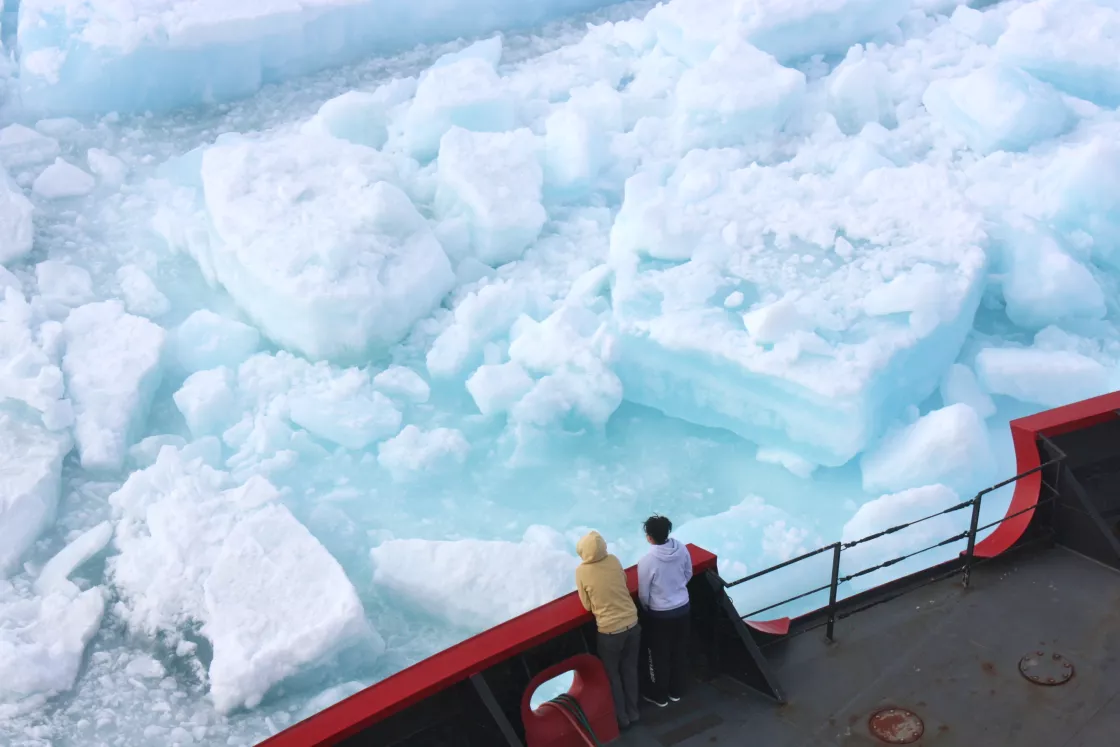The National Snow and Ice Data Center (NSIDC) is part of the Cooperative Institute for Research in Environmental Sciences at the University of Colorado Boulder. NSIDC scientists provide Arctic Sea Ice News & Analysis content, with partial support from NASA.
Sea ice in the Arctic appears to have reached its minimum extent for the year, according to scientists at the National Snow and Ice Data Center (NSIDC). Sea ice extent fell to 5.10 million square kilometers (1.97 million square miles) on September 13, 2013, and has begun its seasonal autumn and winter growth.
Sea ice is frozen ocean water that melts each summer and refreezes each winter. The Arctic sea ice minimum marks the day—typically in September—when sea ice reaches its smallest extent. This year's minimum extent is notably higher than the record low recorded last year of 3.41 million square kilometers (1.32 million square miles) on September 16, 2012.
NSIDC scientists said this year's higher extent is a temporary reprieve for the sea ice. "While this is a very welcome recovery from last year's record low, the overall trend is still decidedly downwards," said NSIDC director Mark Serreze.
"The pattern we've seen so far is an overall downward trend in summer ice extent, punctuated by ups and downs due to natural variability in weather patterns and ocean conditions," Serreze said. "We could be looking at summers with essentially no sea ice on the Arctic Ocean only a few decades from now."
NSIDC research scientist Julienne Stroeve said this year's summer was cooler than the last several summers and that helped to slow the melting. Stroeve said, "Despite the lower temperatures, ice extent still fell well below the long-term average. That's consistent with the Arctic's ice cover being thinner than it was a few decades ago."
Arctic sea ice has long been recognized as a sensitive climate indicator. The region's sea ice extent—defined by NSIDC as the total area covered by at least 15 percent of ice—has shown a dramatic overall decline over the past thirty years.
"No single year's turnaround can erase that," said NSIDC lead scientist Ted Scambos. "Let's not lose sight of the fact that 2013 is a very low extent year, despite the increase from last September."
Please note that this number is preliminary—changing winds could still push the ice extent lower. NSIDC will release a full analysis of the melt season in early October, once monthly data are available for September.
For more details and images on the Arctic sea ice minimum extent, see the Arctic Sea Ice News and Analysis Web site. The site provides regular updates by NSIDC scientists on the condition of the Arctic sea ice.
See an animation of this summer's sea ice extent produced by NASA Scientific Visualization Studio at https://svs.gsfc.nasa.gov/goto?4104.
Media Contact
Natasha Vizcarra
National Snow and Ice Data Center
University of Colorado Boulder
+1 303-492-1497
press@nsidc.org
